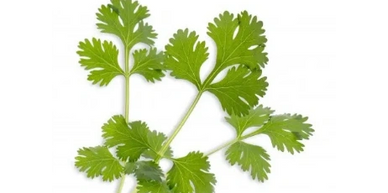C -E
Cabbage
Cauliflower
Cabbage

A member of the food family traditionally known as cruciferous vegetables and is related to kale, broccoli, collards and Brussels sprouts.
An excellent source of vitamin K and vitamin C. A very good source of fiber, manganese, and folate.
* A good source of molybdenum, vitamin B6, potassium, thiamin (vitamin B1), and calcium.
Carrots
Cauliflower
Cabbage
The carrot is a root vegetable, typically orange in color, though purple, black, red, white, and yellow cultivars exist. Carrots are rich in vitamins, minerals, and fiber. They are also a good source of antioxidants. Antioxidants are nutrients present in plant-based foods.
Cauliflower
Cauliflower
Cauliflower

A cruciferous vegetable in the same plant family as broccoli, kale, cabbage and collards
Has a milky, sweet, almost nutty flavor.
Excellent source of vitamin C, and a very good source of manganese, two core conventional antioxidants. High amount of folate, fiber, and complex carbohydrates
Chives
Collard Greens
Cauliflower

Chives, a member of the allium family, this herb has globe shaped, mauve flowers. The chopped stems are usually eaten, but the flowers are also edible.
Chives are very low in calories; 100 g of fresh leaves provide just 30 calories. Nonetheless, they contain many noteworthy flavonoid anti-oxidants, plant fiber, minerals, and vitamins that have proven health benefits.
Cilantro
Collard Greens
Collard Greens

Shiny, smooth, delicate green herb; slender, grooved stems with compound pinnate (leaflets arranged on each side of a common stalk) lower leaves and finely segmented upper leaves. Looks like parsley but feels softer – rub leaves to release fragrance to verify you are holding cilantro, not parsley
Contains oleic acid, palmitic acid, stearic acid and ascorbic acid (vitamin C), each of which are effective in lowering high cholesterol in the blood, as well as the internal walls of the veins and arteries.
Collard Greens
Collard Greens
Collard Greens

Collards’ unique appearance features dark blue green leaves that are smooth in texture and relatively broad. They lack the frilled edges that are so distinctive to their cousin kale.
* Excellent source of vitamin C, beta-carotene, and manganese, and a good source of vitamin E as well as fiber * Excellent source of vitamin K and a good source of omega-3 fatty acids (in the form of alpha-linolenic acid, or ALA)
Dill
Eggplant
Eggplant
Dill (Anethum graveolens) is an annual herb in the celery family Apiaceae. It is the only species in the genus Anethum.
Research has shown that dill can reduce LDL cholesterol levels
Eggplant
Eggplant
Eggplant

One of the most popular varieties of eggplant in North America looks like a pear-shaped egg, a characteristic from which its name is derived. The skin is glossy and deep purple in color, while the flesh is cream colored and spongy in consistency. Contained within the flesh are seeds arranged in a conical pattern.
In addition to this variety, eggplant is also available in a cornucopia of other colors including lavender, jade green, orange, and yellow-white, as well as in sizes and shapes that range from that of a small tomato to a large zucchini.
This website uses cookies.
We use cookies to analyze website traffic and optimize your website experience. By accepting our use of cookies, your data will be aggregated with all other user data.